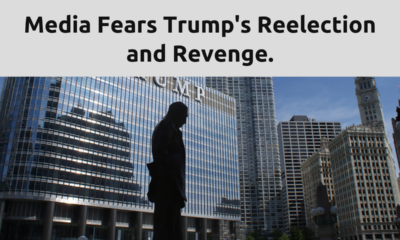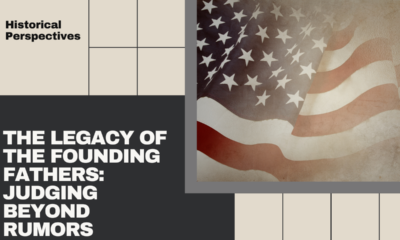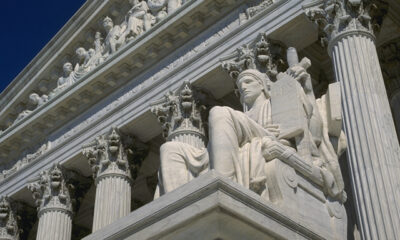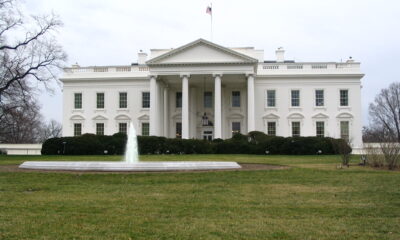Constitution
The election that never ended – TIP 4
The Transition Integrity Project ran a scenario in which election results remained ambiguous from the start and were irreconcilably disputed.
Herewith Part 4 of the Transition Integrity Project (TIP) series. Of the four war games the Project directors set up, one involved an election result that remained ambiguous for weeks. This would lead to deadlock on January 6, with Trump and Biden both claiming victory and both laying claim to the “keys to the kingdom” – and to The Football. This game did not rely on an assumption of guilt of venal shakedown on Trump’s part, but it did rely on the fanatical devotion to Trump by all his Cabinet officers. It also, as ever, assumed – without justice – that the electronic voting machines operated properly, and all mail-in votes were valid.
Review of the Transition Integrity Project series
CNAV has by now treated the Transition Integrity Project with five articles. They include a discussion of:
- The full plans by the Democratic Party to ensure the installation of Biden by any means they deemed necessary,
- The Transition Integrity Project itself, how it came to be, and what it assumed,
- Predictions v. reality of the work-out of the Election of 2020 assuming its actual results (and that these were valid),
- Predictions of how a narrower Biden win would have played out (and how realistic those predictions were), and earlier today,
- A strong suggestion that a wet-behind-the-ears recent college graduate prepared an incriminating document and had someone plant this on the Telegram account of a January 6 defendant.
So Part 4 will be the sixth article overall to treat the TIP. This is the story, according to them, of the Election That Never Ended. It is a repeat of the Election of 1876 – but without an “independent commission” that both campaigns could trust. Indeed the Executive Summary of the Project document decries the result of that election.
To review: in 1876, several States sent alternative electors for Samuel J. Tilden, the Democrat – twenty in all. Republican Rutherford B. Hayes would need all of them to win; Tilden could have won with any two of them. In those days, Presidential terms ended in March, not January. So when Congress couldn’t certify the Electoral College count, they took time to appoint an independent commission.
But the independent commission fails
This Commission was to have five each members from Congress, the administration of Ulysses S. Grant, and the judiciary. Its membership happened to fall out as seven each Republican and Democratic by affiliation, with one independent. But President Grant elevated the independent member to the Supreme Court, thus making him ineligible to serve on the commission. Congress sent a loyal Republican to replace him, and the commission decided the election for Hayes, 8-7.
Outraged, Democrats refused to accept the result. So Rutherford Hayes compromised. He pledged to:
- Withdraw the last of the military occupying forces in Southern States, and also:
- Withdraw support for the last of the provisional governments of other Southern States.
These provisional governments had Northern Republican office holders, which Southerners called carpetbaggers after the then popular kind of traveler’s valise. Gertrude Stephens Brown (Your Country and Mine, ed. 1960, part of the Tiegs-Adams Social Studies Series by Ginn and Company Publishers) offered her acerbic take on these gentlemen:
Many carpetbaggers were dishonest and mean. They had flocked to the South to make money by taking part in the new governments. They knew that if they could hold important government offices, they could govern the South as they pleased. They could even steal a lot of money for themselves.
The TIP directors had their own take on the result of withdrawing occupying forces and support for carpetbagger governments;. They held that the Hayes Compromise
traded an end to Reconstruction for electoral peace and resulted in a century of Jim Crow, leaving deep wounds that are far from healed today.
That attitude on their part perhaps explains why they ended up not resolving their “ambiguous result” game.
The Election That Never Ended – Game One
This attitude might also explain why the TIP directors designated this scenario as Game One. They wanted to dismiss early the thought of appointing an independent commission. Perhaps they saw the breathtaking number of judges – and three Supreme Court Justices – Trump appointed, and the split of Congress. Accordingly they despaired of installing Biden through such a commission, and wanted to put that out of anyone’s mind.
Game One’s description does not specify who won the popular vote or by what margin. But it did say that Electoral College totals would hinge on results in Florida, North Carolina, and Michigan. Different combinations of results from those States could produce a Biden win, a Trump win, or a tie. (The last time the Electoral College was tied was in the Election of 1824. Henry Clay famously decided the election in the House of Representative for John Quincy Adams. Andrew Jackson later won the Presidency in a decisive rematch.)
First turns
So in this game play, Team Trump (see the third article for a description of the seven teams) claimed immediate victory. Trump asked the Justice Department to send “agents” to “secure” polling places, and prepare to call out the National Guard. Attorney General William Barr prepared to sue to stop any further vote counting. Team Biden, of course, declared victory for themselves and called for “every vote to be counted.” At issue, of course, were mail-in ballots, most of which were late in arriving. Team Biden somehow recruited “influential bipartisan elites, elected officials, and retired military officers” to oppose calling out the National Guard. Who those “bipartisan elites” were supposed to be, the TIP directors never said.
Team GOP supported Team Trump’s victory call and seconded their suspicions of voter fraud. But they did not support calling out the National Guard. Team Dem made sure whatever Secretaries of State they controlled would ensure that counting continue.
As game play continued beyond November 10, Team Trump tried again to call out the National Guard. Both campaigns mobilized supporters to “show … numbers in the streets.” Teams GOP and Dem both tried to get State legislatures to send alternative electors. Most State legislatures refused – after White Cell rolled the dice and said they would fail. (White Cell were the game’s judges – or Dungeon Masters in Dungeons and Dragons lingo.)
Election never resolves
Eventually Biden carried North Carolina and Trump carried Florida. And in Michigan, “a rogue individual destroyed a large number of ballots believed to have supported Biden.” Result: Trump won – but Gov. Gretchen Whitmer (D-Mich.) sent alternative, Biden electors to Washington, D.C. After this, Team Trump tried to coerce individual electors to vote for him, and Trump himself invoked the Insurrection Act.
As January 6 approached, Team GOP asserted that Mike Pence, as Vice President, was authorized to accept or reject any given set of electors. The TIP document won’t say what Pence did in this game, but only that neither side accepted the results. So that on January 20, two men were each asserting that he had won the election.
Back to reality
To begin with, neither North Carolina nor Florida was ever in doubt. If anything, Florida went even more strongly for Trump. In fact, several Republican House challengers defeated long-standing House Democrats by keeping a firm grasp on the President’s coattails. The only reason North Carolina might have been doubtful is that a Democrat (Roy Cooper) governed it, and still does.
Michigan is, of course, one of the six contested States – and according to CNN, one of five States that “flipped” to Biden from 2016. But Michigan is notorious for other reasons. Some of the most brazen instances of voter fraud occurred in Michigan. Witnesses report snack trucks delivering batches of putative mail-in ballots at local midnight to polling places, where Officers of Election had papered over the windows. But key Democratic legislators intimidated those witnesses into silence by asking whether they had provided mistaken birthday or other data on their voter registrations. They also spoke of “coming to get” Trump voters and other supporters.
No “rogue individuals” destroyed ballots that night. Instead, rogue groups organized the delivery of putative ballots they just happened to find. Dinesh D’Souza also demonstrated voter fraud in his motion picture, 2000 Mules. And one Michigander faced charges of voter fraud by filling out ballots in the names of incapacitated, but registered, voters. Finally, “Dom Lucre, Breaker of Narratives” revealed multiple instances of voter fraud in Antrim County (Michigan) and Maricopa County (Arizona).
Bad picks
CNAV has said before that Trump’s greatest error was of judgment in his Cabinet nominations. Attorney General Barr was worse than useless, and in fact obstructed any investigation of voter fraud. Vice-President Pence refuses to this day even to consider a Vice-President authorized to reject an elector designation. He wouldn’t even have had to seat alternative Electors. All he need have done was to reject the vote totals from Georgia, Pennsylvania, Michigan, Wisconsin, Arizona, and Nevada. Then with neither candidate having a majority, the House of Representatives would have chosen the President by State bloc votes. Trump would have won that election easily. (Whether Pence would have kept his job after a Senate vote is another question.)
We also know that Mike Pence gave notes from his private telephone conversations to Special Counsel Jack Smith. That (un)worthy then proceeded to indict Trump over the January 6 event. And tellingly, the TIP Game One did not mention any demonstrations on January 6, taking place anywhere.
We also know that one Samuel Arnes, who took part in a college course that, he said, “groomed” him to join the FBI, took matters into his own hands after “becoming concerned” that Trump might refuse to leave the White House. By his own admission he wrote at least part of a document the FBI later “found” in the Telegram account of a January 6 defendant. More likely he wrote all that document, that spoke of occupying the Supreme Court and all six Congressional office buildings.
Influencing a steal of an election?
A month before the Election of 2020, CNN released a breathless tale of an attempt to kidnap Michigan’s Governor Whitmer. Thirteen men went to prison for their alleged roles in that plot. We have every reason to believe today that no such plot was ever in the offing. The FBI invented the tale out of the whole cloth.
This story, such as it was, “broke” after the TIP document came out (August 3, 2020). This obviously implies that the FBI, reading the scenario about “rogue individual(s)” destroying ballots in Michigan, decided to use Michigan to stage a false-flag non-operation. Gretchen Whitmer would have been all too happy to oblige. The same holds for Samuel Arnes, who drew inspiration from the TIP document to fabricate the “1776 Returns” document that has figured in several more miscarriages of justice.
Of course many, even beyond Biden and Democrat partisans, will doubt the nefarious motives CNAV has alluded to here. But Part Five, tomorrow, will examine the last TIP war game – in which Trump wins a clear victory in the Electoral College, and a coalition of Democrats and RINOs conspire to defraud him of victory after the fact. In the immortal phrase known to aficionados and producers of “cliffhanger” series, stay tuned.
Terry A. Hurlbut has been a student of politics, philosophy, and science for more than 35 years. He is a graduate of Yale College and has served as a physician-level laboratory administrator in a 250-bed community hospital. He also is a serious student of the Bible, is conversant in its two primary original languages, and has followed the creation-science movement closely since 1993.
-

 Civilization5 days ago
Civilization5 days agoCHAPTER 12: Seeding Race Wars
Space Is No Longer the Final Frontier—Reality Is [forthcoming release May 2024] -

 Constitution3 days ago
Constitution3 days agoPrecinct Strategy scores again
-

 Education4 days ago
Education4 days agoTitle IX revision sparks State revolts
-

 Civilization2 days ago
Civilization2 days agoLegacy media already assume Trump wins
-

 Education5 days ago
Education5 days agoDid the Freemasons, Illuminati, Spiritualists and Mystics establish this country?
-

 Civilization3 days ago
Civilization3 days agoSCOTUS Is Last Bulwark Against Critical Legal Studies
-

 Education4 days ago
Education4 days agoThe Road Back to Normalcy Starts Where the Problem Began: College Campuses
-

 News3 days ago
News3 days agoTime to Fly – Really Fast














